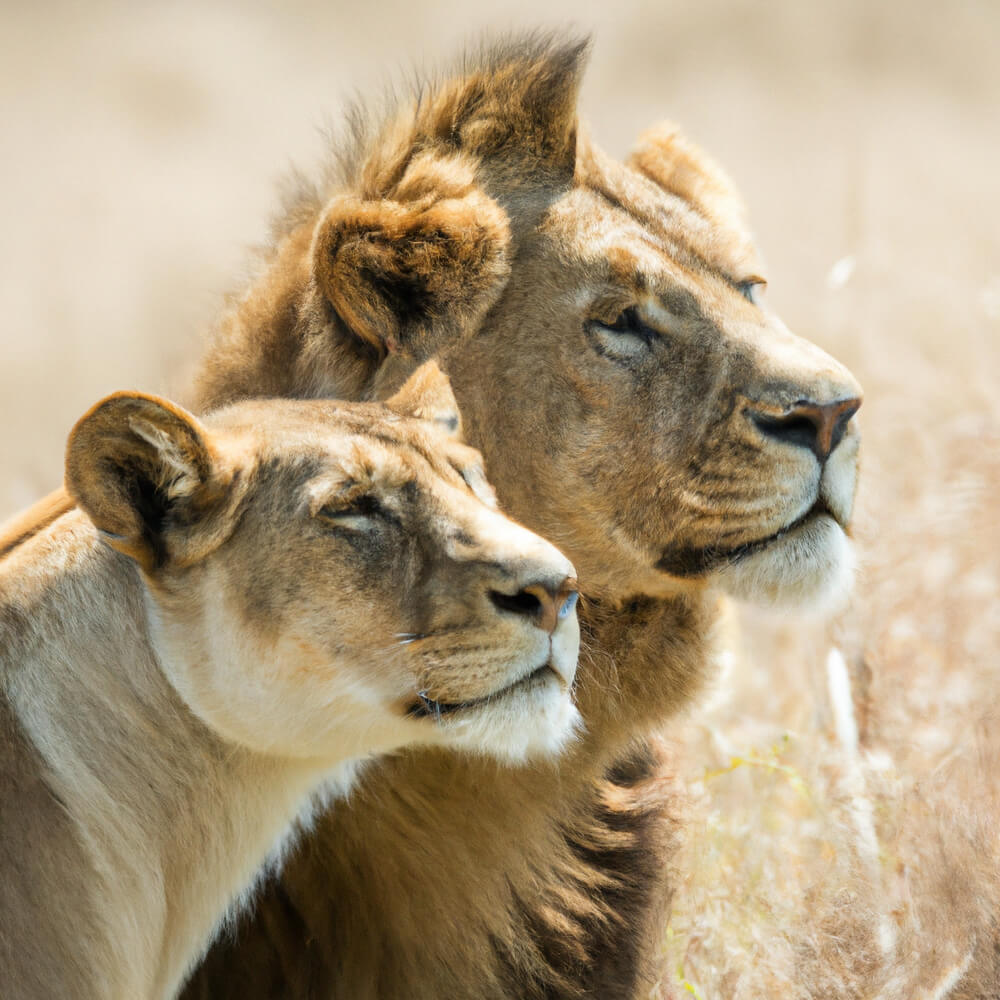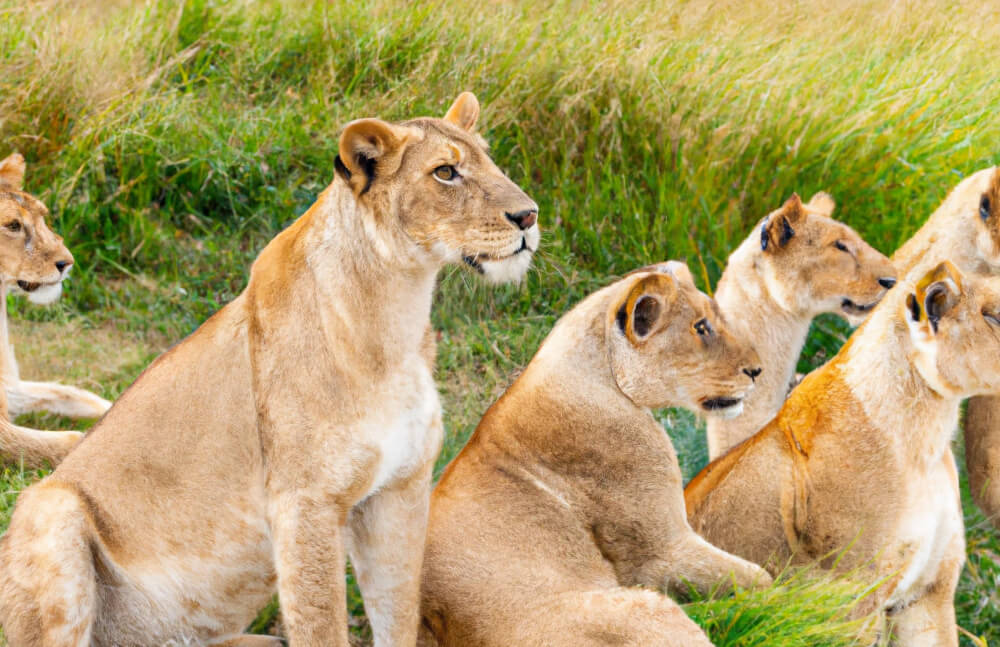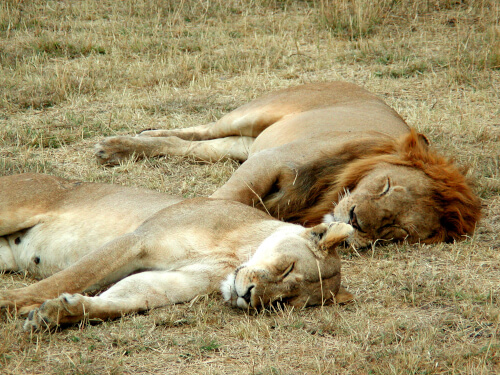



Lion is the common, or non-scientific, name used to refer to a large mammal of the genus Panthera, the group of large cats that also includes tigers, leopards, and jaguars. Lions are carnivores and are the second largest big cats, behind tigers. They are distantly related to house cats, belonging to the same family, Felidae.
| Taxonomic Rank | Name | Common Name |
|---|---|---|
| Kingdom | Animalia | Animals |
| Phylum | Chordata | Vertebrates |
| Class | Mammalia | Mammals |
| Order | Carnivora | Carnivores |
| Family | Felidae | Cat family |
| Genus | Panthera | Lions, tigers, leopards, and jaguars |
| Species | Panthera leo | Lion |
Lions have yellow-brown fur, a long tail with a clump of hair at the end, and retractable claws. Male lions have a distinctive mane of hair around their necks, which makes them look bigger and more intimidating. The mane also protects the male’s neck from bites during fights with other males. Female lions are smaller and more slender than males, and do not have manes. Lions can grow up to 3 m (9.8 ft) long, including the tail, and weigh up to 230 kg (507 lbs).
Lions are social animals that form groups called prides, which consist of related females, their offspring, and one or two males. The females do most of the hunting and cub-rearing, while the males defend the pride’s territory and protect the cubs from other predators.

Lions communicate with each other through sounds, body language, and scent marking. A lion’s roar is a loud vocalization that can be heard up to 8 km (5 mi) away. It is used to warn off intruders and to keep in touch with other members of the pride. Lions also purr, snarl, growl, hiss, and meow.
Lions are native to Africa and Asia, where they live in grasslands and savannas. They prefer areas with plenty of prey animals, such as zebras, wildebeests, antelopes, and buffaloes. They also need water sources and shady places to rest during the day. Lions are adaptable and can live in different climates and habitats, but they are threatened by habitat loss, poaching, human-wildlife conflict, and diseases.
Lions have a special layer of cells in their eyes called tapetum lucidum, which reflects light and enhances their night vision. They can see about 6 times better than humans can in low-light conditions.
Lions also have large ears that can rotate to capture sounds from different directions. They can hear frequencies up to 60 kHz (kilohertz, or thousand beats per second), which is twice as high-pitched as humans can hear. They use their vision and hearing to locate and track their prey in the dark.
A female lion can give birth to up to six cubs at one time. Lions are pregnant for about 110 days, and the cubs are born blind and helpless. They depend on their mother’s milk for the first six months, and then start to eat meat. The cubs stay with their mother for about two years, learning how to hunt and survive. Lions are something called "cooperative breeders," which means that females in a pride share responsibility in caring for its cubs.
 Just like our pet cats, lions sleep most of the day away—up to 20 hours a day! They do this to save energy and avoid the heat of the day, resting in shady places such as under trees or bushes.
Just like our pet cats, lions sleep most of the day away—up to 20 hours a day! They do this to save energy and avoid the heat of the day, resting in shady places such as under trees or bushes.
Also like cats, lions are what's called "crepuscular," which means they are most active at dawn and dusk. This is when their prey is also more active and easier to catch. That being said, lions have a flexible schedule and can adjust their activity patterns according to the availability of food and water.
Lions are sometimes referred to as the “king of the jungle” because of their strength and courage. However, they do not live in jungles, which are areas of dense forest and tangled vegetation. Instead, lions live in open plains.
The expression “king of the jungle” may have come from India, where lions were once common and highly respected. It may have also been influenced by European literature and art that showed lions as symbols of royalty and nobility.
A fully grown lion can run up to 81 km/hr (50 mph), but can only sprint for a few seconds before becoming exhausted. Instead, lions mostly rely on stealth and teamwork to catch prey. Lions usually hunt in groups of two or three, using different roles and tactics to surround and ambush their prey. Lions are opportunistic hunters, which means that they will also scavenge or steal from other predators when possible.